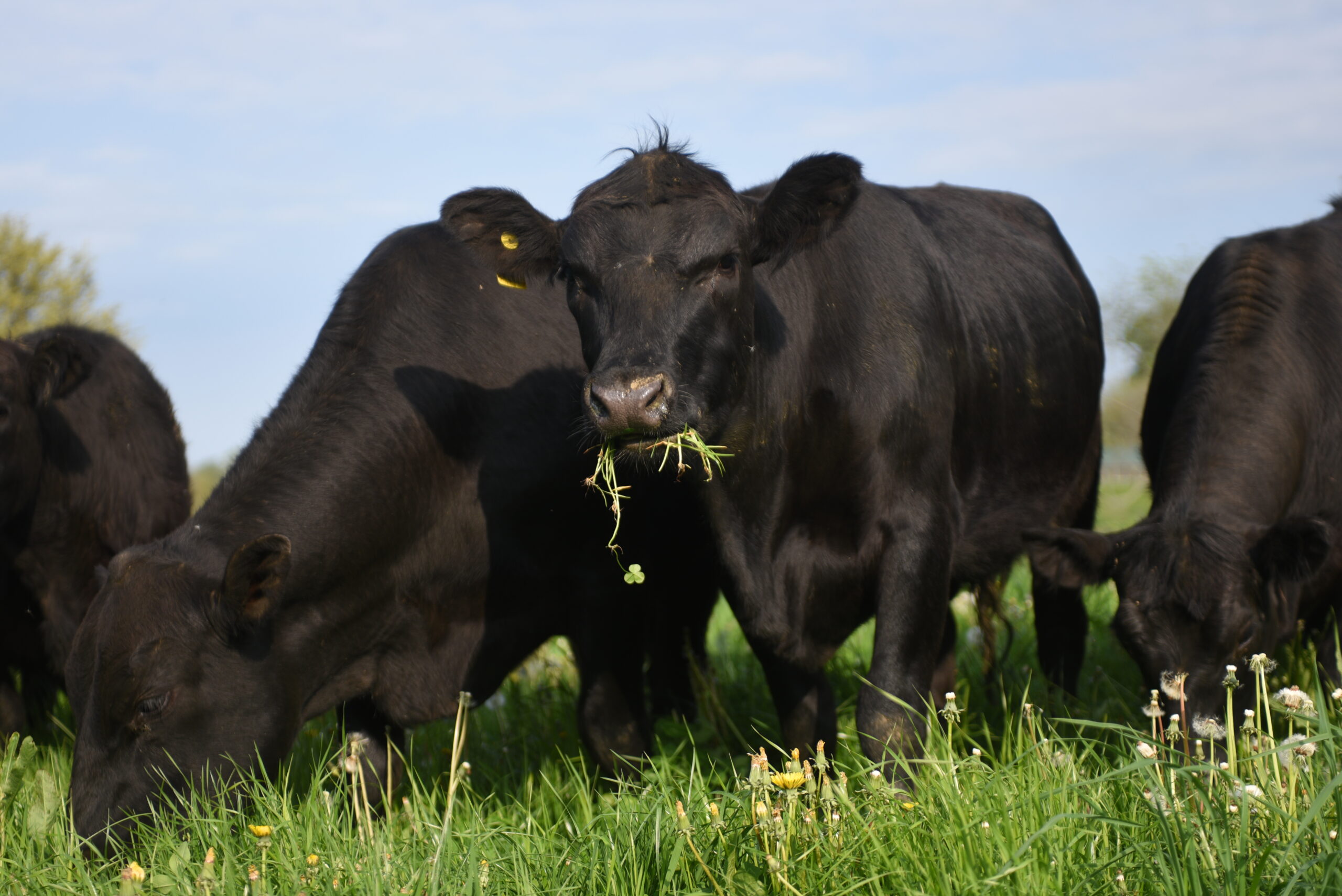Know Your Farmer, Know Your Food
I recently participated in a podcast (March 2024). The moderator provoked the fighting side of me. He asked what I thought of the local food market and where it is going. This year marks our 15th Summer Season. I explained to him that in 15 years, there has been a few constant challenges in marketing local.
1) Everyone's first perception is it is expensive. It can be, but it doesn't have to be. Local farmers can be their own worse enemy, pricing themselves into a small segment of the population. But overall, the right products are priced right.
2) We need to compare apples to apples, so to speak. Not all farming methods are created equally and therefore we, the farmers, can't be marketing commodities.
3) The customer doesn't know what questions to ask and there are some producers who lack integrity.
With this new found energy, I figured I'd touch on a few points to help answer some questions we have been fielding lately from potential new members.
Sincerely,
Trevor
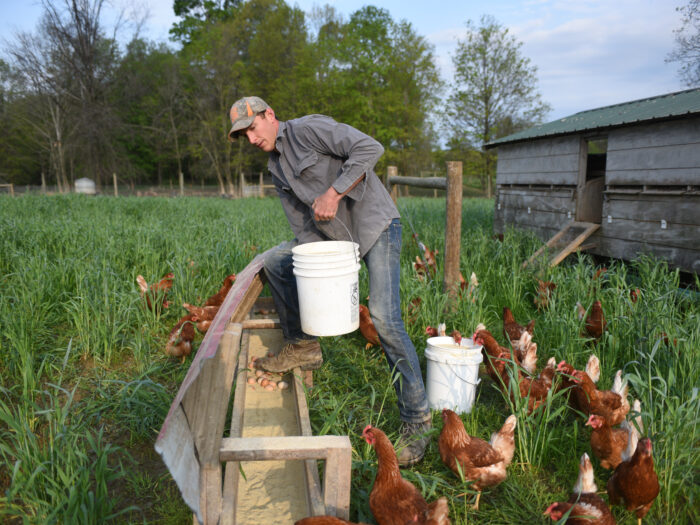
you can have it good, cheap, or fast. Pick 2.
The most memorable advice I have likely received in the last 15 years has been this. Essentially, if it's good and fast, it isn't cheap. If it's cheap and fast, it isn't good. Advice from a lifelong farmer, Kay (pictured below in the corn field).
In reality the statement is a very basic economics lesson in layman's terms. It applies to everything.
Local foods have earned a reputation of being expensive. It could be that it's because they are good (highest quality) and fast (fresh). Or sometimes because of marketing at farmers markets or retailers who push them as a premium option just because.
What I've learned is that eating with the seasons is very cost effective. And at Fresh Fork, I'm very aware of pricing and try to shop for value for my customers.
There are some local products that will always be more "expensive" than the grocery store option - strawberries is one example. But to compare a local, vine ripe strawberry to the plump, fibrous red fruits of the grocery store isn't fair. In that sense, we need to discuss value, not price. The local strawberry, bursting with flavor and nutrition, is a good value whereas the flavorless strawberry from across the globe is "expensive."
Our model at Fresh Fork is to offer a buying club savings - buying in bulk and bundling into a weekly package. The tradeoff to make this work is that we select what goes in the weekly share; your price to pay for the savings is that you have to challenge yourself and utilize everything.
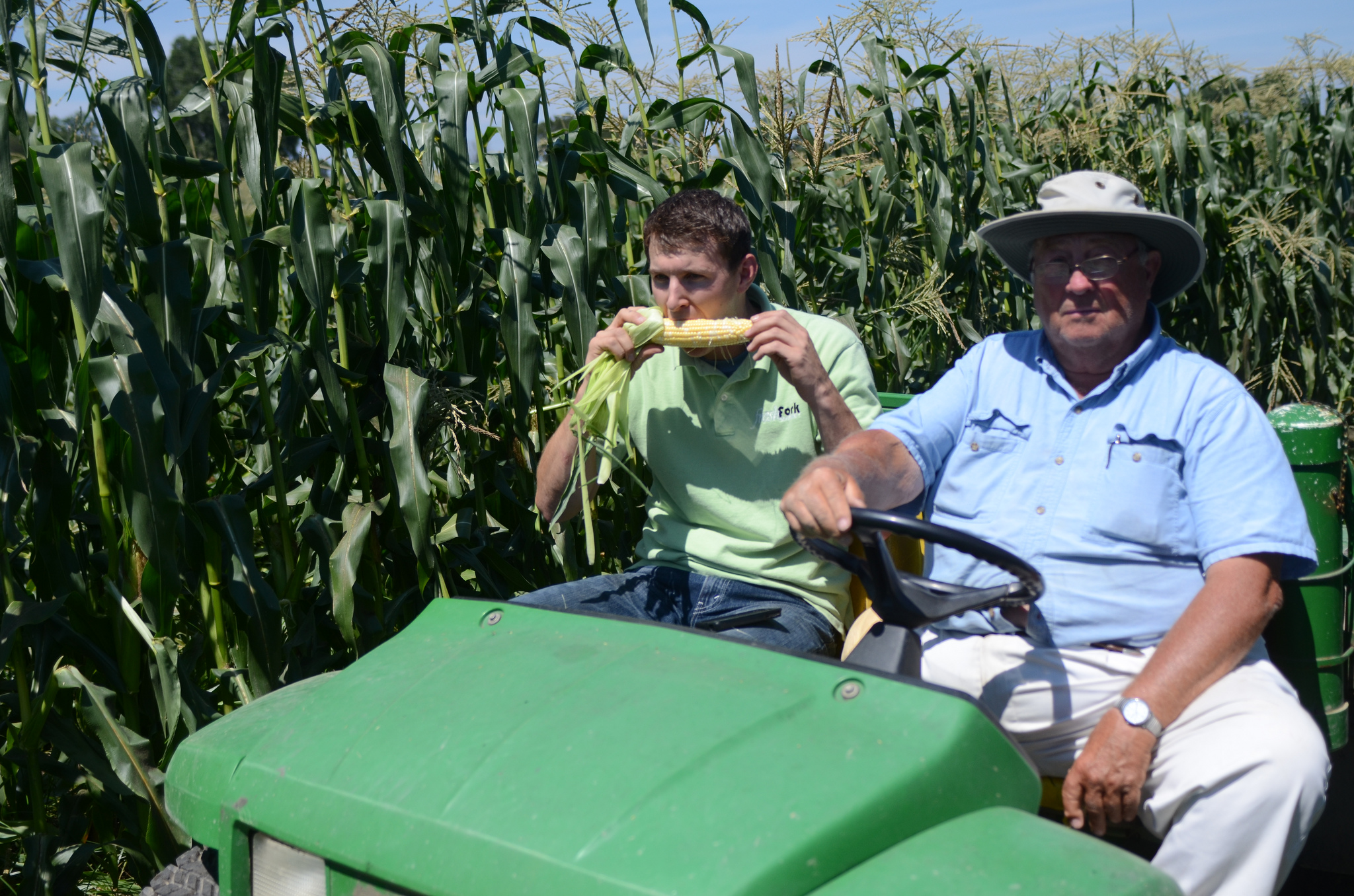
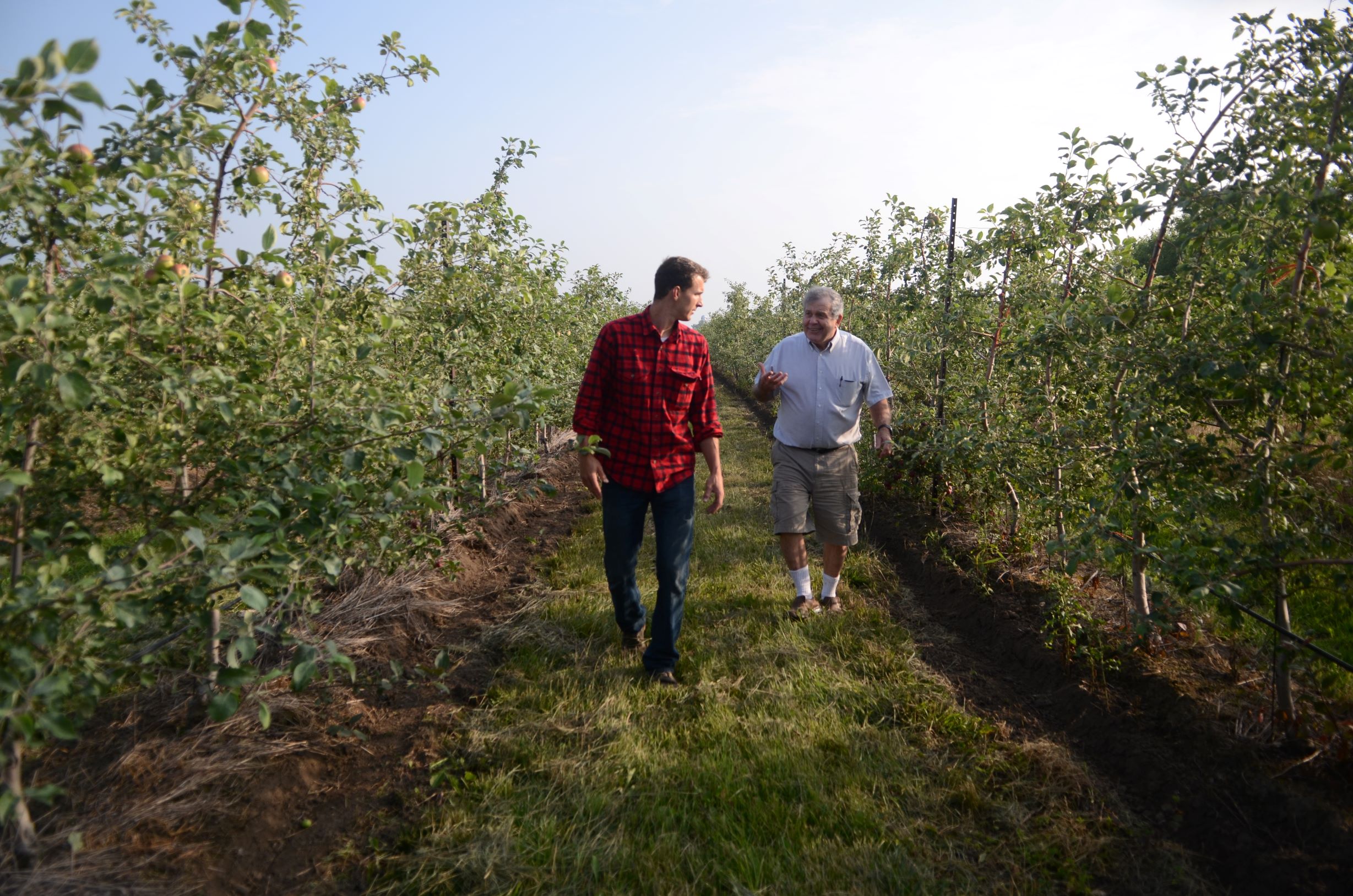
compare apples to apples
That's Rich Eshleman and I walking thru his orchard, literally comparing apples to apples. (top right)
The point being that I've had the good fortune of shaking the hands that feed you. In doing so, I've learned how to compare apples to apples.
My job is to assemble a weekly bag that reflects the season, provides variety, is easy to utilize, and is a fair value.
To do this, I have to know the supply chain and how food is produced. The easiest example to give is for chicken - a product where the price difference between a pasture raised bird and a local, confinement bird is dramatic.
Below are two photos of the same genetics of meat chicken (broilers).
On the left is me pulling "drag pens." These are small, mobile structures that house 65 broilers per pen. There is no floor in the structure so that the birds can peck around in the grass. The tarp on top protects them from the sun and the netting protects them from predators. Every-single-day we have to move these structures. There are 31 in a row, and 4 large "shade wagons" in another pasture. It takes all morning to do this chore, rain and shine.
On the right is a photo of confinement chicken. These are your typical commercial birds, raised in large barns with stocking densities of 1 square foot per bird. The broilers are in a controlled atmosphere where the temperature and lighting are monitored and feed and water are only inches away. Every 6 weeks, 27,000 broilers are harvested per barn.
Unfortunately, there are a lot of local confinement barns for broilers. Brands like Gerber and Case Farms all have broiler houses across the countryside. These are technically local by mileage, but they are not the chicken I want to sell (or eat).
These factory farmed birds are cheap, but you get what you pay for. The broiler we raise on pasture is more flavorful, has a better texture, and is healthier for you and the environment. I can tell you with certainty that I could be making more money (and living an easier life) raising birds in a confinement barn. I chose not to.
To get the best value from pasture raised chicken, the consumer should buy whole birds, learn to cut them down, and utilize every part - including the bones. It's a small price to pay for the savings.

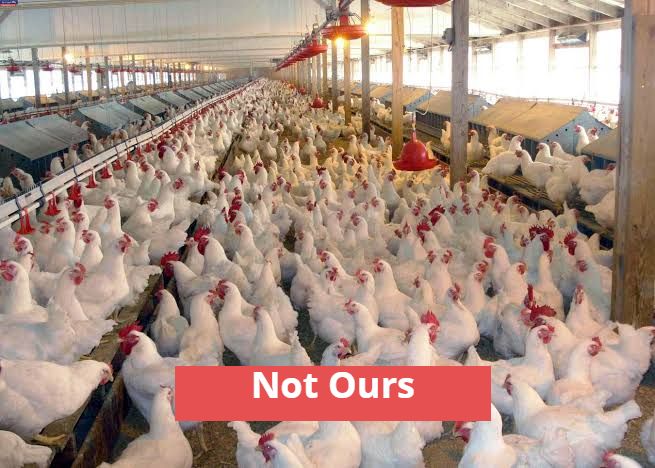
asking the right questions
Becoming a farmer has been the best thing that happened to me in the last 15 years. It allows me to better collaborate with the farmers and ask the right questions. Here are two examples of the integrity we put into our products.
GRASSFED BEEF MEANS GRASSFED & FINISHED BEEF. I was recently talking with a food manufacturer who needed 1,000# per week of grassfed beef bones. She wanted a quote. I said no way. There isn't that kind of supply around. She stated she was getting them currently from a local source. His cattle are grassfed but then get grain the last 30 days. I raised an eyebrow. Are you sure? 1,000# per week of the bones you need means he is killing 15 cattle per week, 750 per year, which means to raise them on pasture as grassfed he has to have about 750 cows to calf 750 stockers per year, then feed them for 2 years. That's an operation demanding probably 1,500 acres of pasture. Me reading between the lines - producer is buying beef at auction who can't verify what they have been fed and and how long they have been on grain, and what kind of grain.
I've been burnt before. So each week we haul our own animals - picking up directly at the farmer so we can verify the management style.
IS IT ORGANIC??
One of the most common questions we get lately is about whether or not our food is organic.
Short answer is: Mostly. Most of our produce is from either certified or non-certified but organically grown sources.
Some items, particularly tree fruits, are from more conventional sources utilizing Integrated Pest Management (explained below).
What I can assure you though is that I'm asking the questions you wouldn't even know to ask, and I eat the same food. Here are a few examples.
The Best Darn Ugly Carrots, without Lorox. Carrots are one of the most challenging and labor intensive vegetables to grow organically. In conventional agriculture, the chemical companies have figured out how to grow them. You apply a "pre-emergent" herbicide, such as Lorox, at specific timing intervals. This allows the carrot to pop-up with no competition.
Joseph and Mike, two neighbors between Charm and New Bedford, are growing a majority of our carrots this year. They are both certified organic and it has taken them the last few years to scale up and master the organic carrot at volume.
Organic Earworm control on Sweet Corn. Organic doesn't mean pesticide free. It means safer pesticides that are naturally derived. For example, I work directly with a neighbor to grow sweet corn for us. He isn't certified organic, but I can see the crop from my window and can talk to him about what he's doing.
For fertilizer, he focuses on cover crops tilled back into the soil and chicken litter. His big advantage is he's growing on a small scale and his family can go out and cultivate the crop - hoeing the weeds - until the corn is well established. The final step is how does he protect against insects. We've settled on a certified organic - and pricy - pesticide for earworm control called Entrust. Spinosads and Pyretherims are organic classes of pesticides, safer than organophosphates of conventional ag.
This type of details is how we shop for the vegetables that go into your bag.
Integrated Pest Control at Orchards. The biggest opportunity for organic in Ohio is an organic orchard. It is, however, very risky. The humid climate of Ohio is prefect for fungus and mold, creating problems like fireblight and scab in an orchard. The farmer has to remain financially viable. He may lose some customers to his conventional approach, but he's guaranteed to lose all of his customers to fruit that is covered in scabs, holes, or is ugly.
Integrated Pest Management is where the farmer has a "bug scout" that monitors traps in the orchard. They look for certain densities of insects before treating the orchard. Extensive training is required for the pesticide applicator and there are withholding times before the fruit can be harvested.
SEASON RUNS JUNE - OCTOBER
22 WEEKS OF LOCAL, JUST HARVESTED GROCERIES
20 CLEVELAND/AKRON PICK UP LOCATIONS
